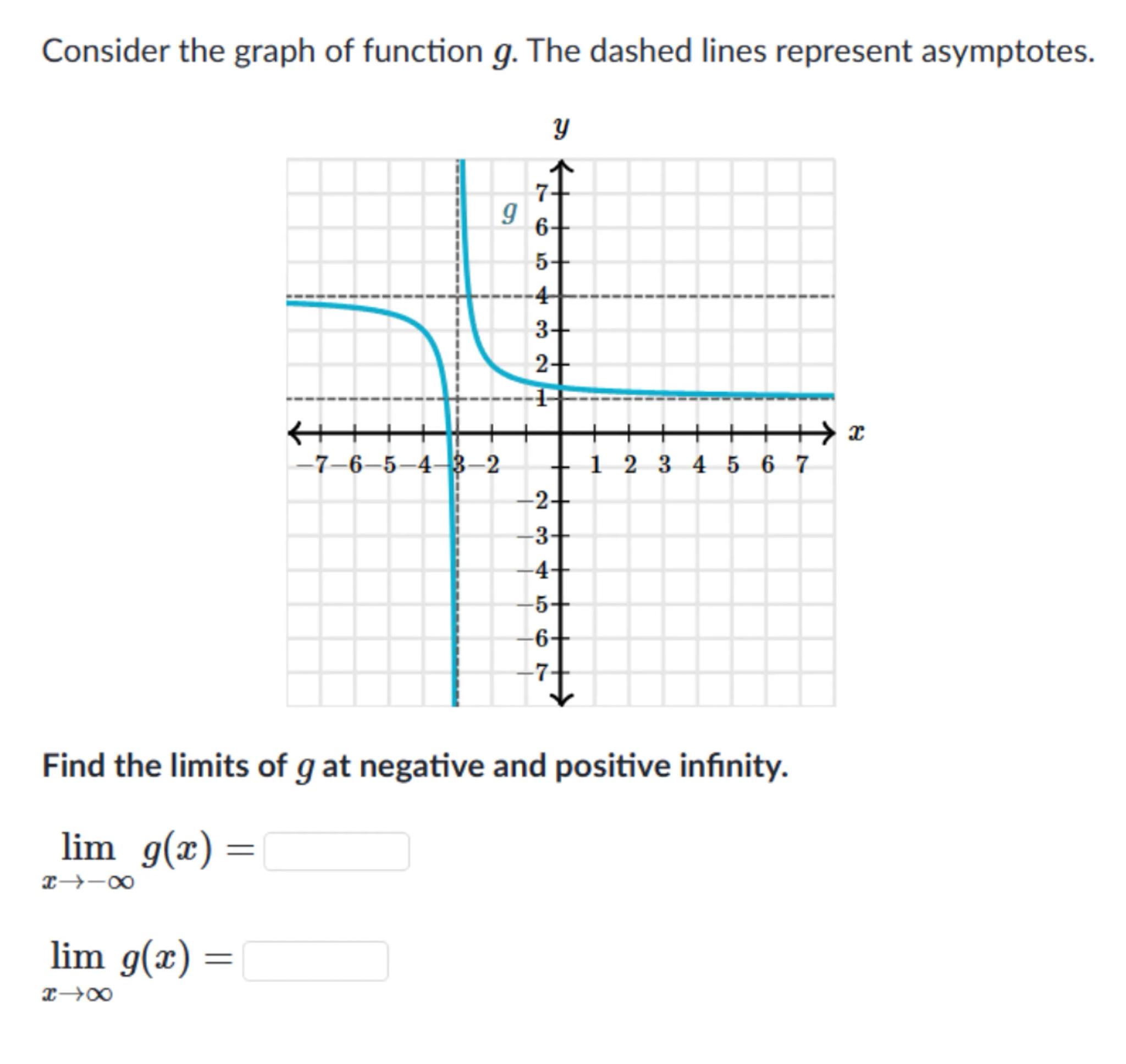
Sia

Question
Math
Posted over 1 year ago
Consider the graph of function . The dashed lines represent asymptotes.
Find the limits of at negative and positive infinity.


Answer from Sia
Posted over 1 year ago
Solution by Steps
step 1
To find the limit of as approaches , we observe the behavior of the graph in the leftmost part. The graph starts slightly above the dashed horizontal line at and approaches this line as goes to . Therefore,
step 2
To find the limit of as approaches , we observe the behavior of the graph in the rightmost part. The graph approaches the dashed horizontal line at as goes to . Therefore,
Answer
Key Concept
Limits of a function as approaches and
Explanation
The limits of a function as approaches and can be determined by observing the behavior of the graph near the horizontal asymptotes.
Not the question you are looking for? Ask here!
Enter question by text
Enter question by image
Unlock Smarter Learning with AskSia Super!
Join Super, our all-in-one AI solution that can greatly improve your learning efficiency.
30% higher accuracy than GPT-4o
Entire learning journey support
The most student-friendly features
Study Other Question